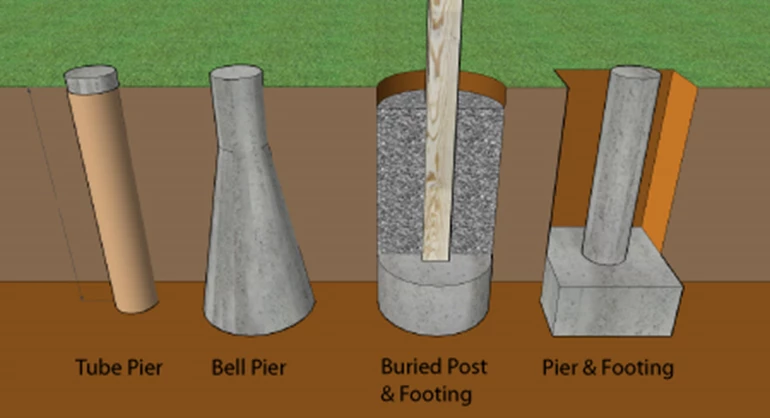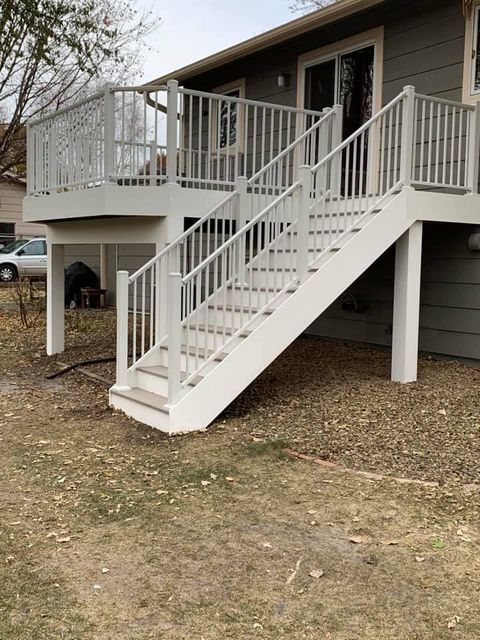Expert Tips for Putting Up Deck Footings to Assistance Your Outdoor Area
When it involves constructing a deck, one of one of the most critical elements to take into consideration is the installation of proper footings. These grounds are the structure upon which your exterior space will certainly relax, supplying security and support for several years to come. What exactly does it take to mount deck grounds appropriately? In this discussion, we will certainly check out expert suggestions and methods that can aid make sure a successful and resilient deck installment. From selecting the ideal kind of footings to avoiding typical blunders, we will offer you with the understanding and understandings you need to confidently start your deck-building trip. So, allow's dive right in and discover the secret to a strong and resilient outside space.
Importance of Proper Deck Footings
Correct deck footings are important for guaranteeing the security and durability of your outdoor area. Without strong and appropriately installed grounds, your deck may become unsteady, leading to safety dangers and costly fixings.

In enhancement to stability, proper deck grounds also add to the long life of your outside area (Deck Footings). Footings that are developed and built to withstand the components and dirt conditions in your location will certainly help prevent the deck from changing or clearing up gradually. By guaranteeing the grounds are appropriately sized and mounted, you can decrease the danger of damages to the deck structure, prolonging its life expectancy and decreasing the demand for costly fixings or substitutes

Selecting the Right Sort Of Footings
When selecting the ideal type of grounds for your deck, it is very important to think about aspects such as dirt problems, regional building codes, and the overall design of your outdoor space. The kind of footing you pick will play a critical duty in making certain the security and long life of your deck.
One usual sort of ground is the concrete footing. Concrete grounds are suitable for a lot of dirt problems and give exceptional assistance for decks. They are usually installed below the frost line to avoid shifting and clearing up because of cold and thawing cycles. An additional choice is helical piers, which are ideal for areas with unstable soil or high water tables. These piers are screwed into the ground and give strong support for the deck.
In many cases, you may need to use customized grounds, such as heap grounds or deep structures, if you are developing a large or multi-level deck. These grounds are made to disperse the weight of the deck over a larger area, making sure stability and avoiding sinking or resolving.
Before choosing a sort of ground, it is necessary to seek advice from regional building codes and guidelines to ensure compliance. In addition, think about the layout and meant use of your exterior area. Elements such as the size, shape, and load-bearing requirements of your deck will certainly influence the sort of footing that is most Recommended Site appropriate.
Preparing the Ground for Footing Setup
To effectively prepare the ground for footing installation, it is vital to evaluate the dirt conditions and take needed actions to guarantee security and sturdiness of the deck. The initial step is to excavate the area where the grounds will be set up.
As soon as the area has been dug deep into, the following step is to small the dirt. This can be done utilizing a plate compactor or by using a hand meddle. Condensing the soil helps to get rid of any kind of voids or air pockets, which can cause resolving and instability over time.
After compacting the soil, it is essential to lay a layer of gravel or crushed stone at the end of the excavation. This will certainly provide drain and assistance to avoid water from merging around the footings, which can lead to disintegration and instability.
Step-by-Step Overview to Putting Up Deck Footings
After effectively preparing the ground for footing installment, the next step is to begin the process of setting up deck grounds. This step-by-step overview will certainly give you with a clear understanding of exactly how to set up deck grounds for your outdoor room.
Determine the place: Beginning by noting the positions of the deck grounds using stakes and string. Ensure that the locations align with the design and layout of your deck.
Dig the openings: Make use of a post opening miner or an auger to dig the openings for the grounds. The deepness and size of the openings ought to be in accordance with neighborhood building ordinance and the details requirements of your deck layout.
Degree the openings: Make use of a degree to make sure that the holes are dug to the proper depth and are level with each various other. (Deck Footings)
Include crushed rock: Location a layer of gravel at the end of each hole to enhance water drainage and protect against the timber from deteriorating.
Put the grounds: Place the grounds right into the openings, seeing to it they are level and plumb. Make use of a level and a determining tape to guarantee accuracy.
Safeguard the footings: Pour concrete right into the holes around the grounds, loading them blog here to the top. official source Use a post degree to make sure the footings continue to be degree as the concrete sets.
Permit time for treating: Let the concrete treatment according to the maker's instructions prior to waging the deck building.
Typical Mistakes to Prevent During Footing Installation
One important aspect to think about throughout the setup of deck footings is avoiding common blunders that can jeopardize the stability and long life of your outside space. While deck grounds may feel like a uncomplicated and easy component of the building and construction process, overlooking particular factors can cause costly repairs and prospective safety dangers down the line.

Additionally, disregarding to set up proper water drainage steps can create water to build up around the grounds, causing rot, degeneration, and the eventual weakening of the deck's foundation. Furthermore, using the incorrect type of footing product or failing to appropriately secure the grounds can jeopardize their architectural integrity.
To stay clear of these mistakes, it is necessary to seek advice from a professional or comply with industry guidelines to make sure correct footing installation. By doing so, you can guarantee the security and longevity of your outdoor area, giving a enjoyable and safe atmosphere for many years to find.
Final Thought
To conclude, setting up appropriate deck grounds is critical for the security and durability of your outside room. By picking the appropriate kind of footings and effectively preparing the ground, you can make certain a strong structure for your deck. Adhering to a detailed overview and staying clear of usual blunders throughout footing installment will certainly better enhance the resilience and safety of your deck.
Proper deck footings are essential for guaranteeing the security and long life of your outdoor room. The grounds offer as a link in between the deck and the ground, enabling the weight of the deck and its residents to be distributed uniformly into the dirt.One usual kind of footing is the concrete footing. Place the footings: Position the grounds into the holes, making certain they are level and plumb. Secure the grounds: Pour concrete into the openings around the footings, loading them to the top.